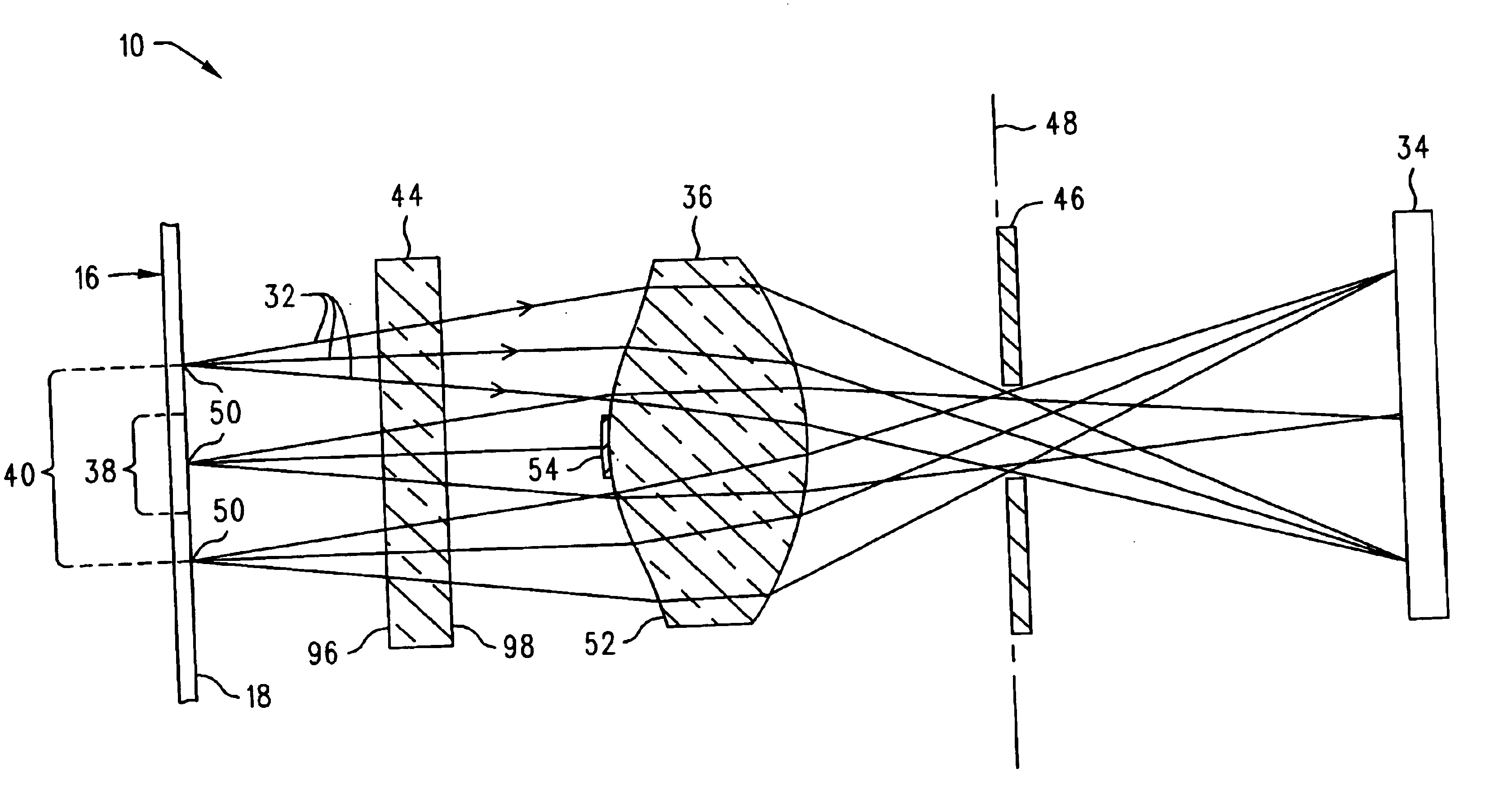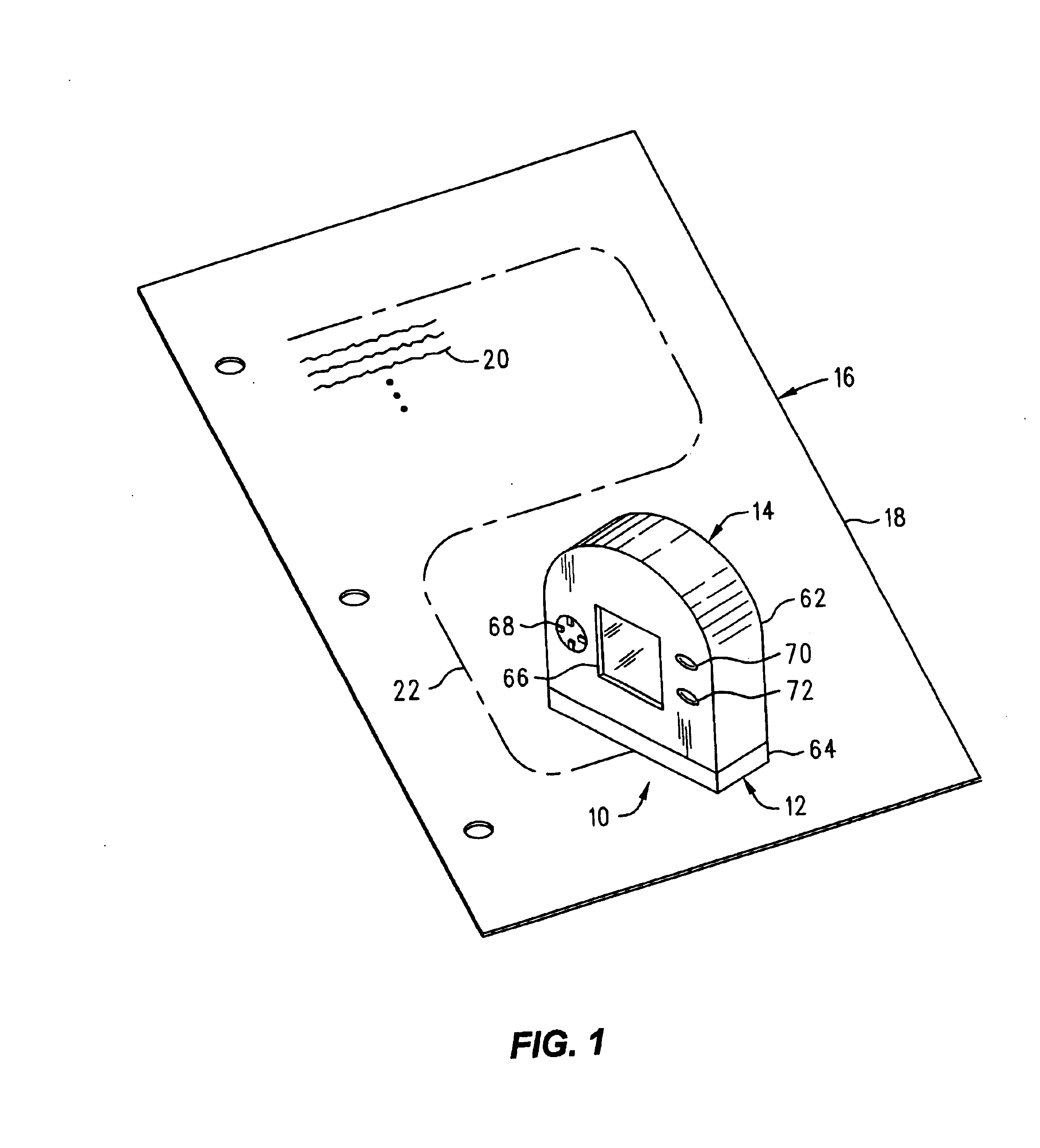Optical system for compensating for non-uniform illumination of an object
an optical system and object technology, applied in the field of hand-held or portable optical scanners, can solve problems such as difficulty in uniform illumination, sources typically used to illuminate navigation areas, and inconvenient operation
- Summary
- Abstract
- Description
- Claims
- Application Information
AI Technical Summary
Benefits of technology
Problems solved by technology
Method used
Image
Examples
Embodiment Construction
An optical system 10 (FIG. 7) for compensating for non-uniform illumination of an object is shown and described herein as it could be used in an optical navigation system 12 of the type that may be used in a portable or hand-held image scanner 14 (FIG. 1). As will be described in greater detail below, the optical system 10 compensates for the non-uniform illumination of the object from which navigation data are obtained, thereby enhancing the consistency and reliability of the navigation data produced by the optical navigation system 12.
In the exemplary application illustrated in FIG. 1, the portable or hand-held image scanner 14 may be used to scan an object 16, such as a document 18 with written text 20 provided thereon. The optical navigation system 12 provides position or navigation information to the scanner 14 thereby allowing the scanner 14 to scan documents of nearly any size regardless of the size of the portable image scanner 14. For example, the entire document 18 may be ...
PUM
 Login to View More
Login to View More Abstract
Description
Claims
Application Information
 Login to View More
Login to View More - R&D
- Intellectual Property
- Life Sciences
- Materials
- Tech Scout
- Unparalleled Data Quality
- Higher Quality Content
- 60% Fewer Hallucinations
Browse by: Latest US Patents, China's latest patents, Technical Efficacy Thesaurus, Application Domain, Technology Topic, Popular Technical Reports.
© 2025 PatSnap. All rights reserved.Legal|Privacy policy|Modern Slavery Act Transparency Statement|Sitemap|About US| Contact US: help@patsnap.com



